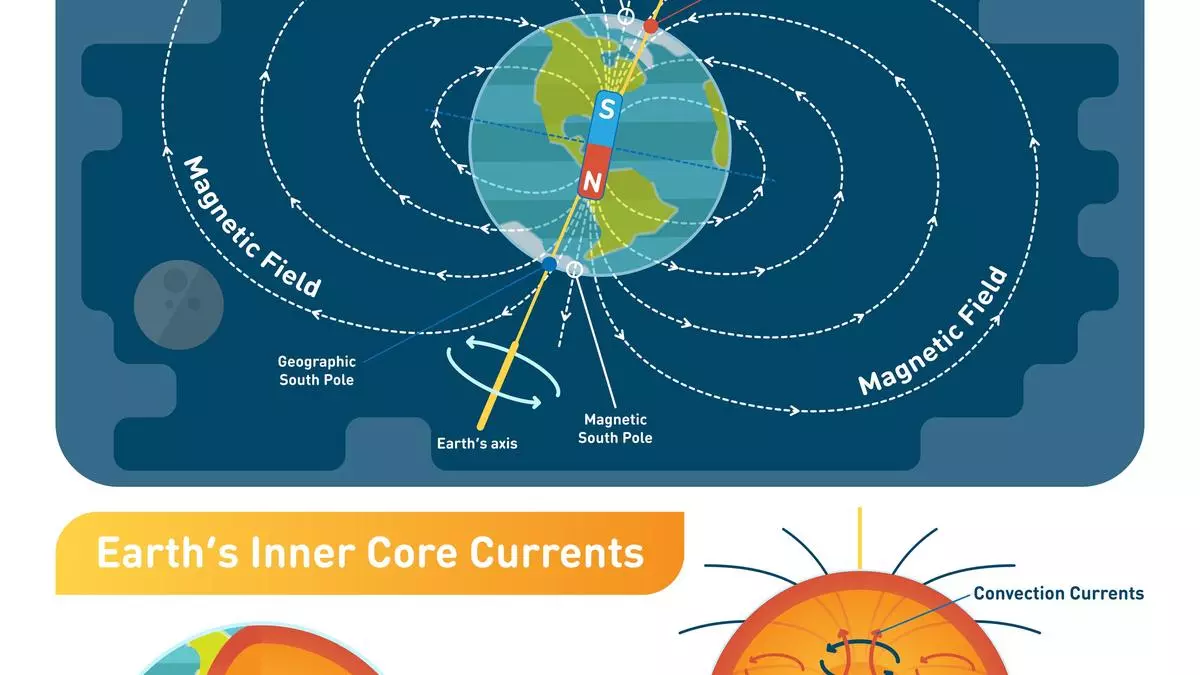Earth’s magnetic north pole, where the magnetic lines emanate (and converge at the magnetic south pole), today lies about 400 km from the geographic North Pole. But the magnetic poles are known to wander. They also flip, so that magnetic lines start emanating from (what is today) the magnetic south pole and converge at the north pole. The last time this happened was 780,000 years ago and you can never tell when the next will happen.
However, in recent years the magnetic north pole — today located in the Arctic Ocean above Canada — is speeding towards Siberia. Its behaviour has flummoxed experts such as Dr William Brown, global geomagnetic field modeller at the British Geological Survey. He says in the latest report of the World Magnetic Model that the pole’s conduct “is something we have never observed before”. While the magnetic north has been moving slowly around Canada since the 1500s, in the past 20 years it accelerated towards Siberia, increasing in speed every year until, about five years ago, it suddenly decelerated from 50 to 35 km per year, which is “the biggest deceleration in speed we’ve ever seen”.
Earth’s magnetic field, caused by the motion of liquid iron and nickel beneath the crust, remains one of the more poorly understood aspects of the planet.
Fortunately, in the GPS era, the magnetic poles matter less for navigation, but the north pole’s dash towards Siberia raises intrigue.
